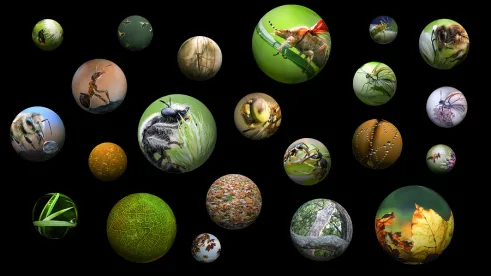On May 16, 2019, the U.S. Environmental Protection Agency (EPA) announced that it was seeking comment on its Draft Revised Method for National Level Endangered Species Risk Assessment Process for Biological Evaluations of Pesticides (Draft Revised Method). 84 Fed. Reg. 22120. It also announced that it would host a public meeting on June 10, 2019, in which it will present the Draft Revised Method and provide an additional opportunity for the public to provide feedback.
The Draft Revised Method states it is intended to be “used in the evaluation of potential risks from pesticides to listed species” and that it will be “used by EPA for making effects determinations under registration review, which will also be used to inform biological opinions from the Fish and Wildlife Service and the National Marine Fisheries Service [(the Services)].”
EPA states that the Draft Revised Method document “describes proposed revisions to the interim methods used to conduct effects determinations as documented in EPA’s [biological evaluations (BE)] for federally threatened and endangered species for pesticides.” EPA states the revisions are based on: (1) “refinements” following the method used in the first three national-level BEs for chlorpyrifos, diazinon, and malathion; (2) consideration of public comments provided through stakeholder meetings and submitted to the docket for the pilot draft BEs; (3) consideration of National Research Council (NRC) recommendations; and (4) “lessons learned during the development of the first three BEs.”
EPA states that the following are major aspects of its proposed revisions on which it is seeking comments:
- To more accurately represent where and to what extent a pesticide is likely to be applied, EPA is proposing an approach for incorporating pesticide-specific usage data into Steps 1 and 2 of the BEs. While the pilot BEs relied on use assumptions from pesticide product labels to represent where the pilot chemicals were likely to be applied (e.g., applied to all labeled crops at maximum application rates simultaneously), the Draft Revised Method proposes to incorporate usage data (e.g., survey data, including actual application rates) in the determination.
- Based on the accuracy of the spatial data utilized and the conservative assumptions related to the action area and potential drift, EPA’s notice states that it is proposing to interpret “a
- EPA is proposing an approach for introducing components of probabilistic analysis into the BE, as the “goal of the probabilistic analysis is to more fully capture and characterize the variability in the range of potential exposures and toxicological effects to listed species to better inform the biological opinion.”
- EPA is proposing a weight-of-evidence framework “to distinguish those listed species that are likely to be adversely affected (LAA) from those that are not likely to be adversely affected (NLAA), based on criteria (e.g., dietary preferences, migration patterns, extent of range potentially exposed) associated with the likelihood that an individual will be exposed and affected.”
The June 10 public meeting, which EPA states “is part of the federal government’s coordinated effort to improve the Endangered Species Act (ESA) process that is used when pesticides are federally registered,” will be held from 9:00 a.m. to 12:00 p.m. (EDT) in the lobby-level conference center of EPA’s offices at Potomac Yard South in Arlington, Virginia. Those wishing to attend either in person or via teleconference/webinar must register by May 30, 2019. Registration is available online. Comments on the Draft Revised Method are due by July 1, 2019, in Docket No. EPA-HQ-OPP-2019-0185 on www.regulations.gov.
Commentary
This is the latest chapter in the long saga of coordination between ESA review by the Services and EPA registration activities. The steps outlined in the Draft Revised Method are designed to improve the coordination of work between the agencies and represent an important step in designing a framework which might make the current situation more reliable, predictable, and efficient. The current process has been subject to criticism on a number of fronts, with the current BE process seen as unsustainable given the amount or resources and time consumed by the first BEs.
The goal is eventually to have the Services and EPA “play nice together” and implement a leaner and more efficient process, which is considered absolutely necessary if EPA hopes ever to complete appropriate ESA assessments on hundreds of active ingredients formulated into thousands of end use pesticide products. Such efforts could also represent a cornerstone of the agencies’ meeting provisions in the 2018 Farm Bill (Section 10115) which includes requirements for the agencies to “… increase the accuracy and timeliness” of the ESA consultation process, as well as implement these same policies stated in the Memorandum of Agreement between EPA, the Department of the Interior, and the Department of Commerce on Establishment of an Interagency Working Group to Coordinate Endangered Species Act Consultations for Pesticide Registrations and Registration Review.





 />i
/>i

